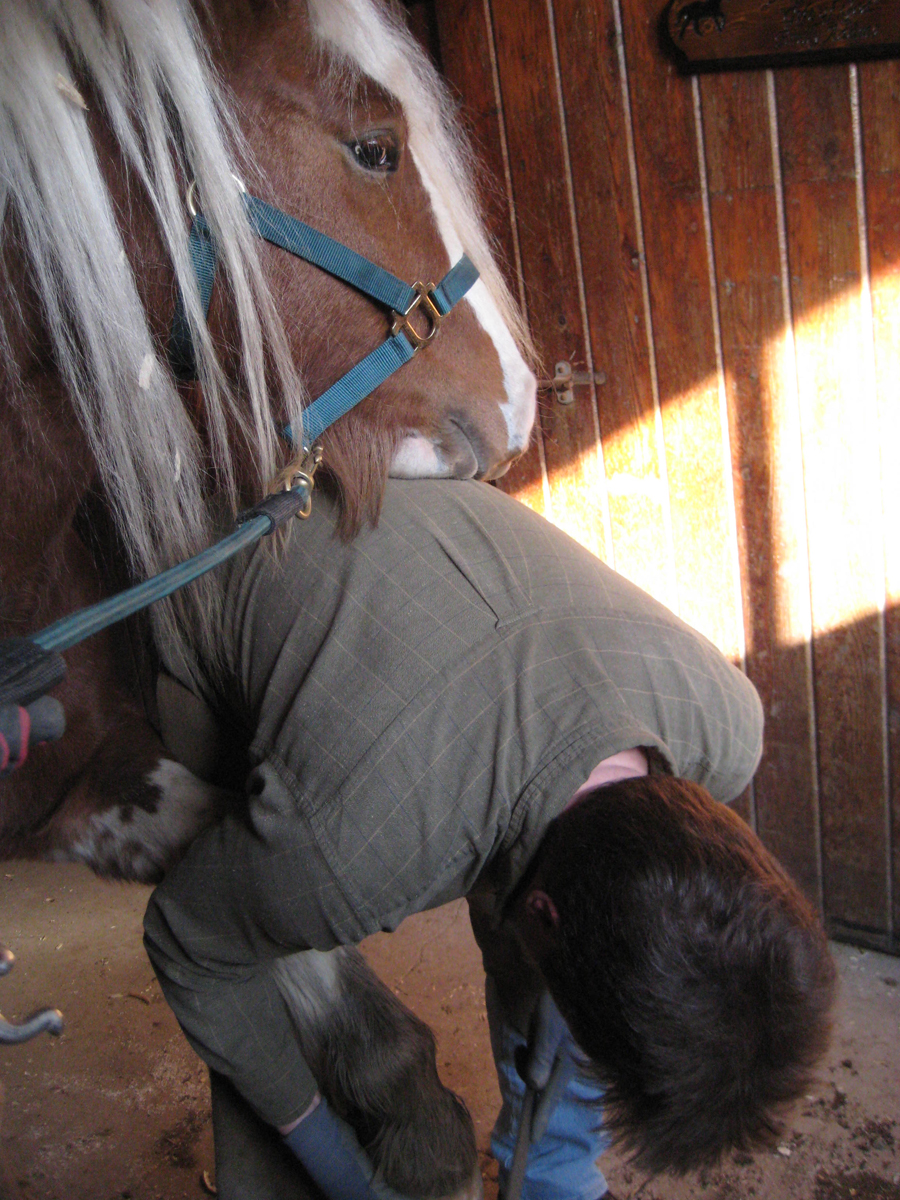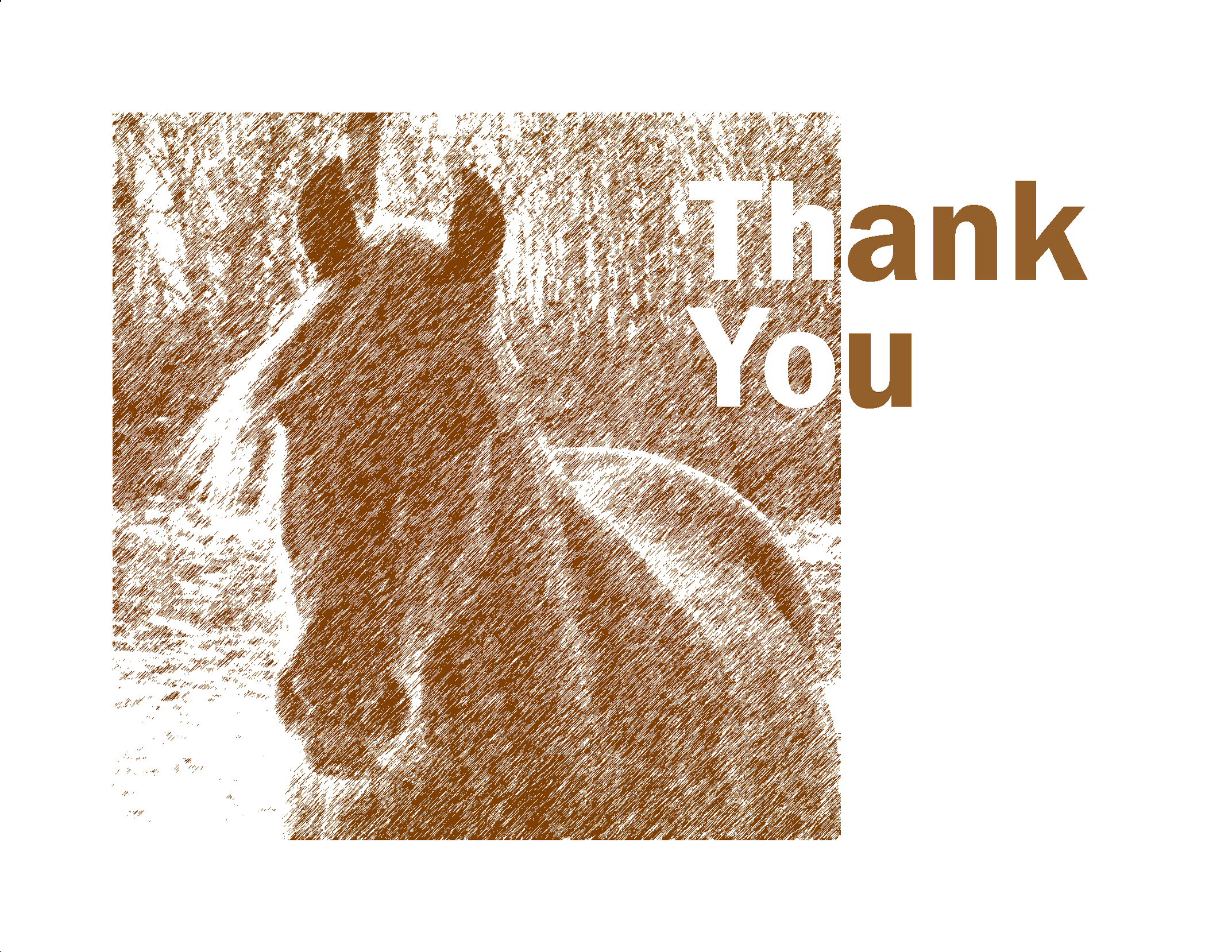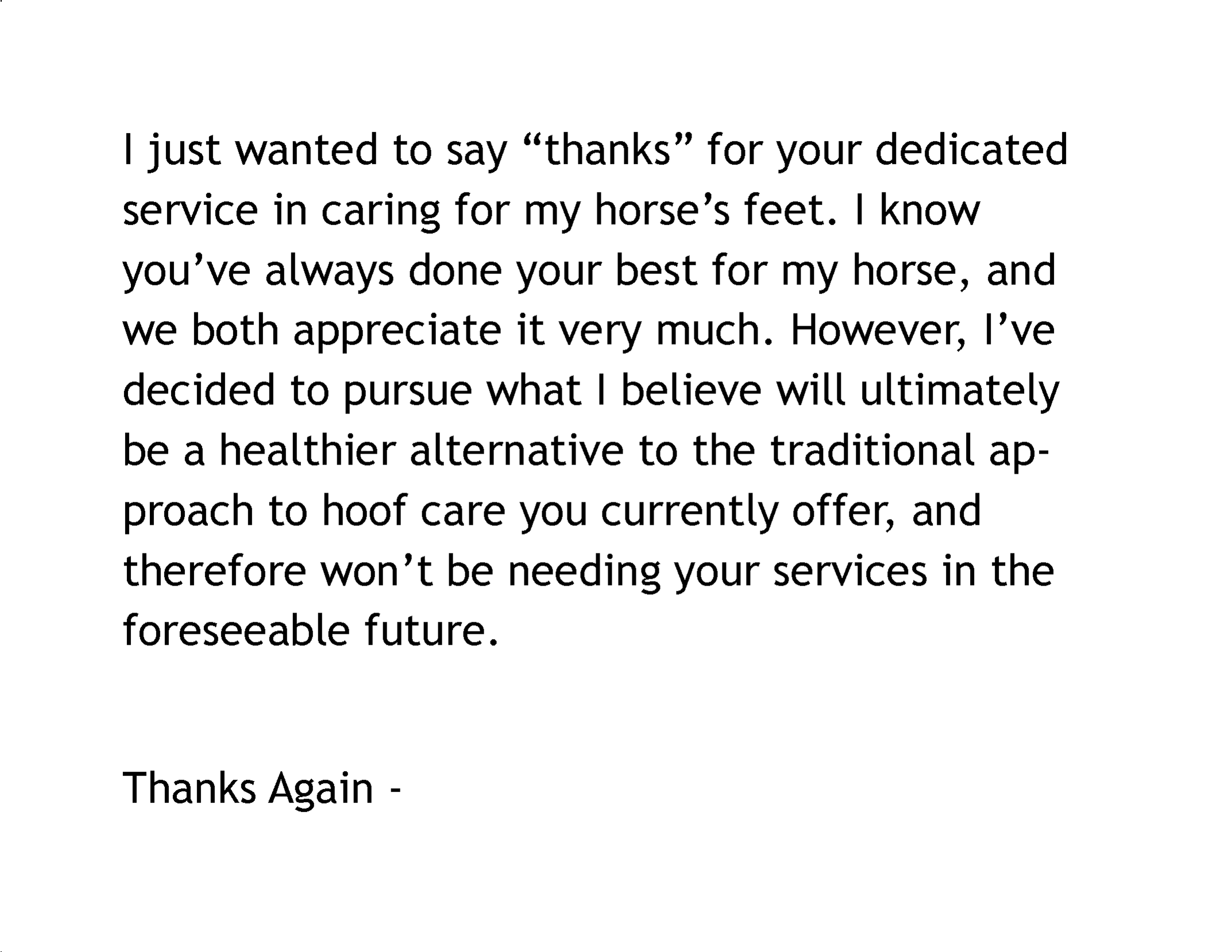This youngster looks really upset, doesn’t he? But his contentment with me is only part of the hoof-care story, which brings me to the subject of this post: the following email I received from a brand-new client the other day –
Steve, I just wanted to take a minute and thank you for the work you did on _______ on Sunday. By Monday I saw a difference. This evening (Wednesday) I had my horse back. She has not moved this fluidly in 5 years.
This horse owner had been unhappy with her farrier for quite a while because it seemed to her that her horse’s hooves weren’t properly balanced. And she was right: besides the usual too-long heels, her horse’s rear hooves had been out of medial/lateral (side-to-side) balance for a long time, as evidenced by the asymmetrical flares in the heel quarters. But, as she explained to me, although she’d been observing my work at her barn for a year and was impressed with how well the horses were doing, she just couldn’t figure out how to tell her farrier “goodbye.”
This is certainly not the first time I’ve heard this story. I remember one owner in particular who called me in to look at a horse with an undiagnosed and absolutely crippling frog infection neither her farrier nor her vet had managed to recognize. That horse’s hooves, along with her other 3 horses’ hooves, were also quite out of balance. And yet, in spite of the realization that her horse was suffering at the hands of her current farrier because of his apparent lack of knowledge, as well as the other problems with his work, she was extremely reluctant to dismiss him. “He’s such a nice guy!” she kept exclaiming.
“Niceness” is a wonderful quality, of course, but my horse doesn’t really care a fig about that. He cares about the hoof care provider’s competence, horse-handling abilities, and overall demeanor. Those are the characteristics of any equine professional that ultimately matter to the horse. If my horse’s care providers possess those characteristics, I may (or may not) elect to overlook some of the other things I hear about them, like chronic lateness, unreturned phone calls, unwillingness to answer questions, arrogance, and just plain rudeness. Frankly, I don’t see why I shouldn’t expect to “have it all” from anyone calling himself or herself a professional, but everyone has a different tolerance for what they consider to be “too much.” On the other hand, if I thought for one moment that my horse’s care providers weren’t adequately trained and doing the absolute best possible for him, they’d be gone in half a heartbeat, nice or not!
Sadly, that’s the case in the hoof care world – at least, in the U.S., where there aren’t any licensing or certification requirements for hoof care providers (which, I might add, absolutely shocked a horse owner from the U.K. when I told her that the other day). So the burden is on the owner to try to determine whether or not a person under consideration is adequately prepared to take on the job. And how do you determine that? Well, I’d begin by reading these 5 articles –
- What Makes It “Natural Hoof Care?”
- Natural Hoof Care Revisited (or “Promises, Promises”)
- A Matter of Conscience
- Half a Trim?
- How Do You Know?
The information presented in them will help you figure out if your hoof care provider, or one under consideration, is actually up to the task from a knowledge perspective. And while I realize they’re written with the barefoot horse in mind, I want to emphasize that everything in them is equally relevant to a horse who wears shoes. That’s because physics is physics, and the laws of nature don’t change just because I might wish they could! So what’s important in trimming a horse to be barefoot is equally important when trimming a horse about to be shod.
Once the hoof care provider has cleared the knowledge hurdle, move on to the others. Watch him or her trim a horse or two, and observe how he/she interacts with the animals. Do the horses seem reasonably happy, or can’t wait to get away? Does the handling seem unnecessarily rough? Would you want him or her performing a professional service on you? At that point, the rest is pretty easy; you can decide readily enough whether the people and business skills are adequate, and probably gain some useful insight by talking to some existing customers (which he/she should be happy to have you do).
So if your hoof care professional isn’t measuring up, whether because of a lack of knowledge, a lack of horse or people skills, or both, think hard about making a change. And if it’s the right thing for your horse, politely tell your current hoof care provider “thanks” and move on. Use the card below if you like; clicking on it will take you to a printable version –
As hard as I know this can be, it’s very important. And, ultimately, your horse will thank you for it. He’ll reward your difficult decision with a happier attitude, better movement, and more years of sound service, which also means more riding time with fewer vet bills. And you’ll reward your decision with less worry, less drama, and a happier attitude about every trip to the barn, which means less overall stress in your life.
Life is, indeed, short. You’re worth it. And so is your horse.


